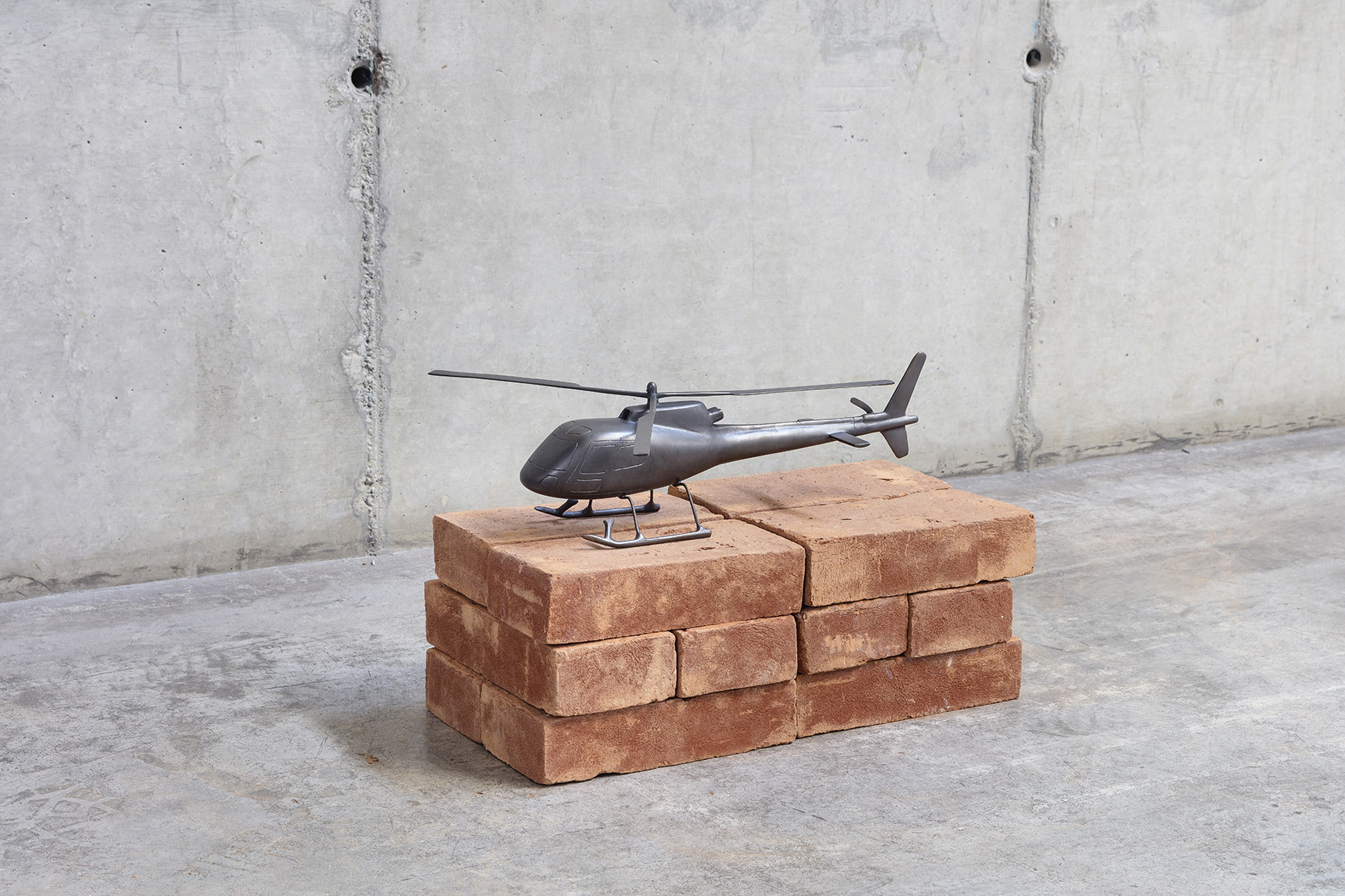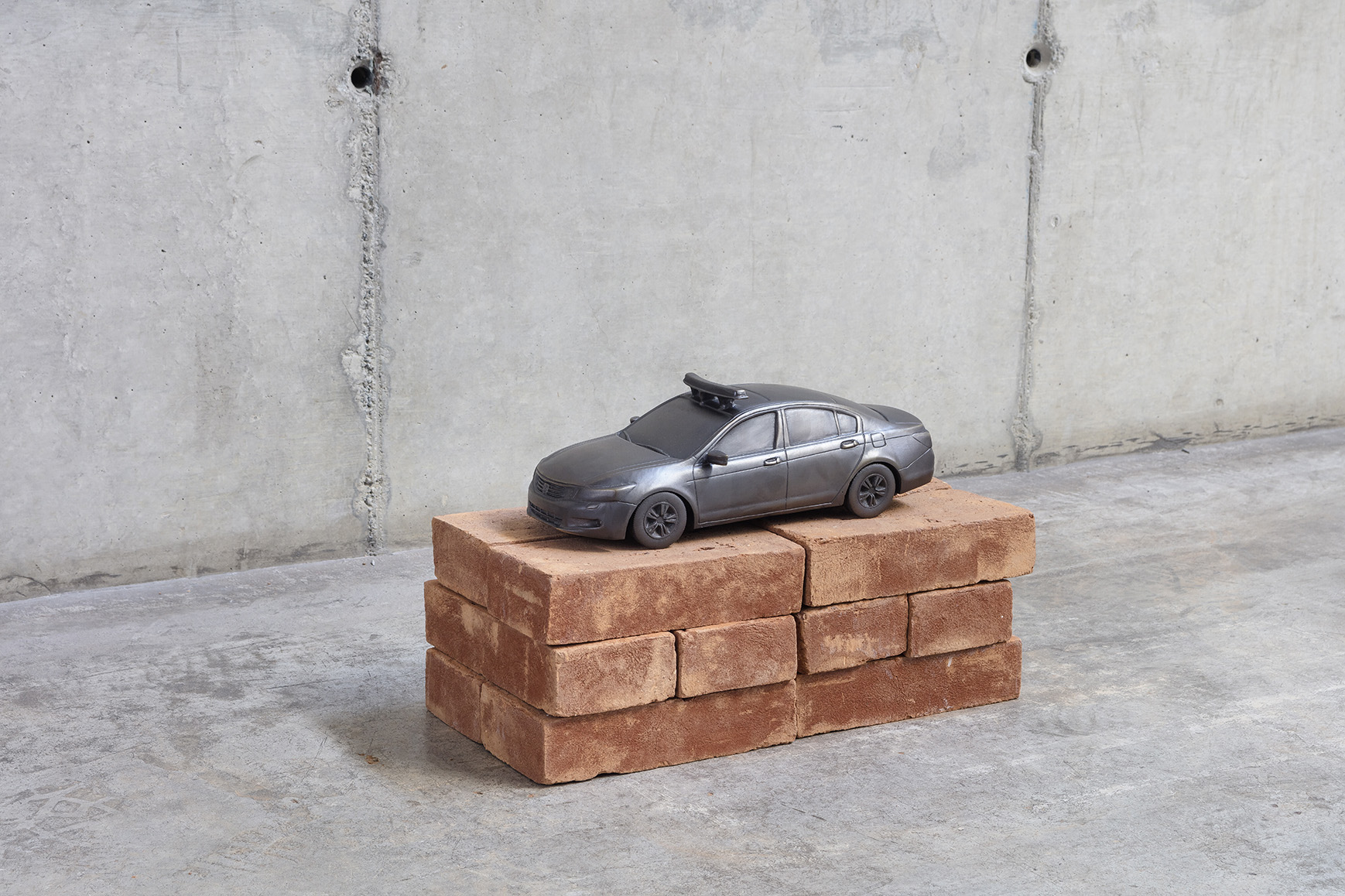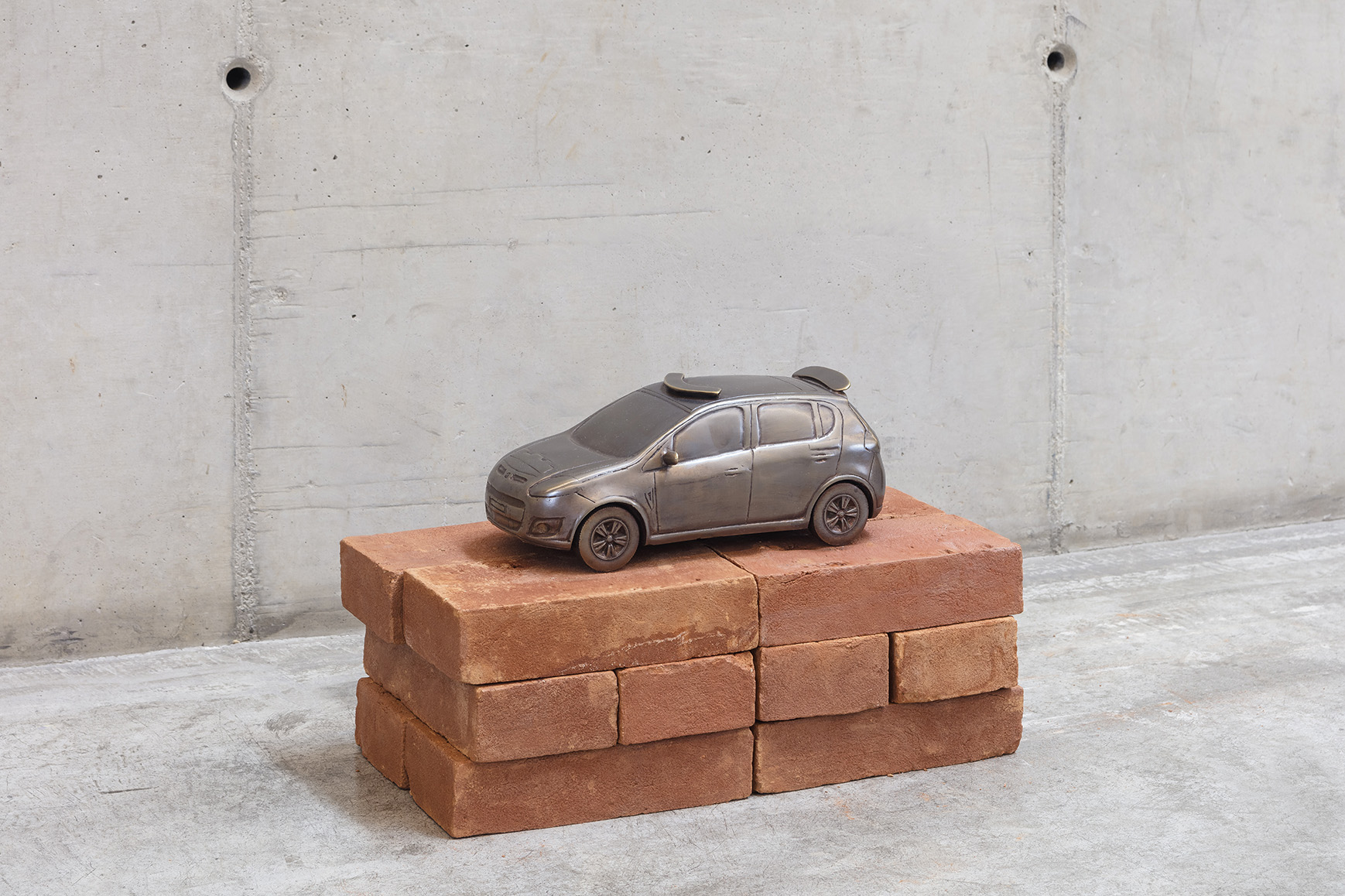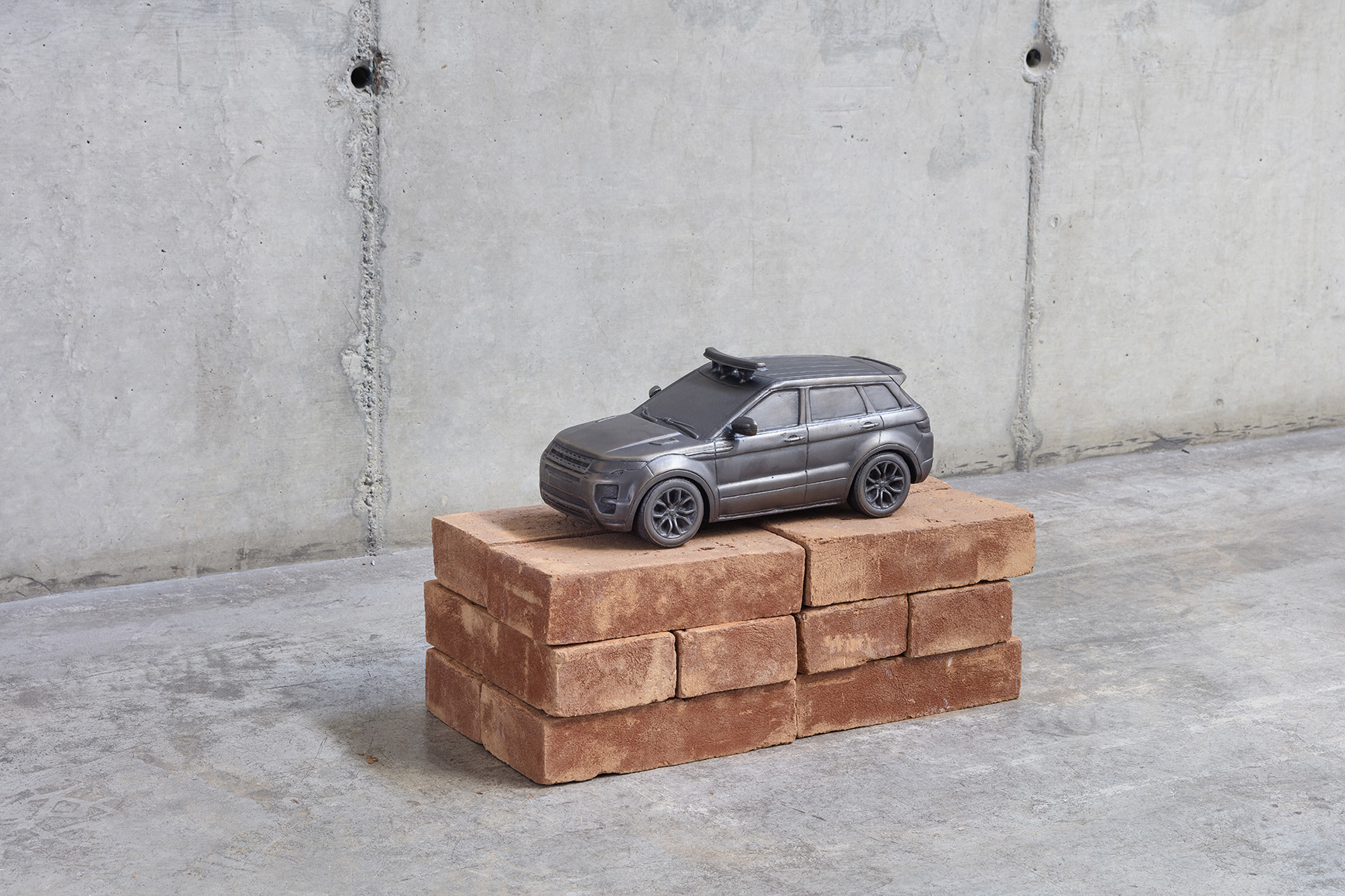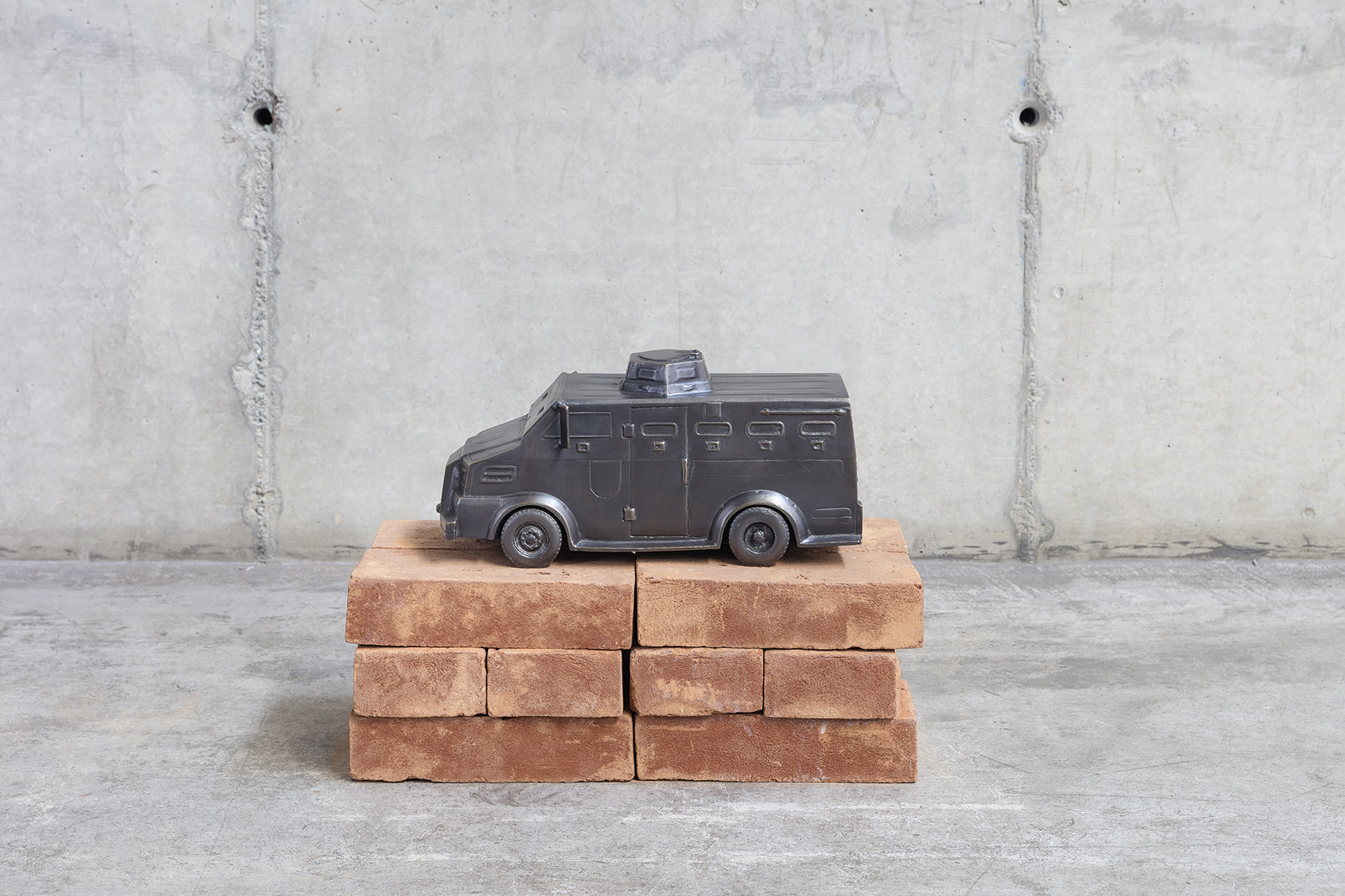










brinquedo de furar moletom (toy that pierce sweatpants), 2018
site-specific intervention on the balcony of MAC Niterói - Brasil
variable dimensions
photos Rafael Ardoján
The stories related to the colonialism in Latin America and its traumatic reflections in contemporary times comprise some of the subjects of interest by Jaime Lauriano. Born and based in the city of São Paulo, the artist has developed different works in which his critical eye turns to the narratives of violence in Brazil, especially regarding the black population in a period that goes from the slave trade to the resistance of the quilombola communities.
His proposal of occupying the balcony of MAC-Niteroi follows the recent history of curatorial projects that reflect the specificity of a museum that offers a panoramic view of the Guanabara Bay. Starting from that, the artist reflects on the place that is historically occupied by its cartographic imagery: a port area that has been once a territory of fortresses, fighting invasions and conflicts, that tried to assure the security of the colonial Brazil. These historical episodes were superimposed on others in which conflict was the key word in the state of Rio de Janeiro: the military dictatorship and the police violence of the last years are blended here today.
The artist, therefore, proposes a small barricade in order to occupy the balcony of the museum. This wall is made with pieces popularly called "colonial bricks", acquired in potteries and resulted of a production process that refers to the history of construction industry in Brazil. Positioned on top of this long wall, which occupies three galleries of space, the public can see miniatures of vehicles related to militarism, defense and violence.
Three caravels, a war tank, a warplane and twenty-seven miniatures of military police cars are placed on the bricks as if defending the museum's interior space. This patrol, comprised by these miniatures, represents all twenty-seven capitals of Brazil’ states and has their replicas extracted from models of automobiles, commonly used by the Military Police: the caveirão (meaning ‘big skull’, a Brazilian nickname for the armoured Military Police car), in Rio de Janeiro, the mobile base of the Military Police of São Paulo and four types of economy cars (Palio, Gol, Fiat Uno and pick-up). Bullets cups from weapons used by Military Police officers were collected from different cities of Brazil and constitute the iron that were used as material for these replicas.
The title of the exhibition was taken from the song "Vida loka parte 1" (Craze life part 1), by the famous São Paulo rap group Racionais MCs. Taken from the album “Nada como um dia após o outro” (Nothing like day after day), from 2002, it is a sentence that refers precisely to some of the essentials elements of Lauriano’s proposals: the limits between violence and childhood, between miniatures of toys and military ammunition. Until when playing "cops and robbers" will be seen as a natural child's play?
* text written by curator Raphael Fonsceca for the exhibition Brinquedo de furar moletom (toy that pierce sweatpants) at MAC Niterói from August to December 2018.









